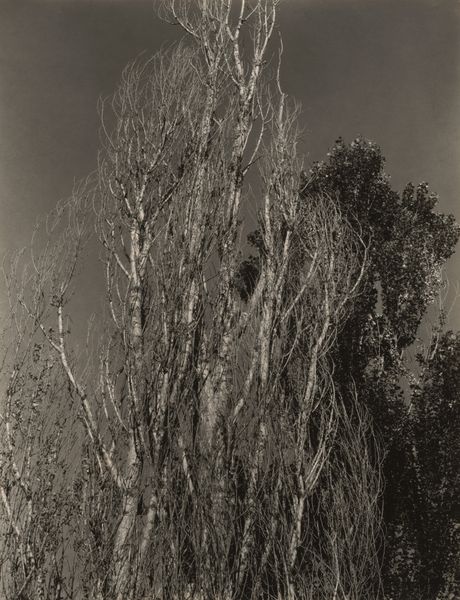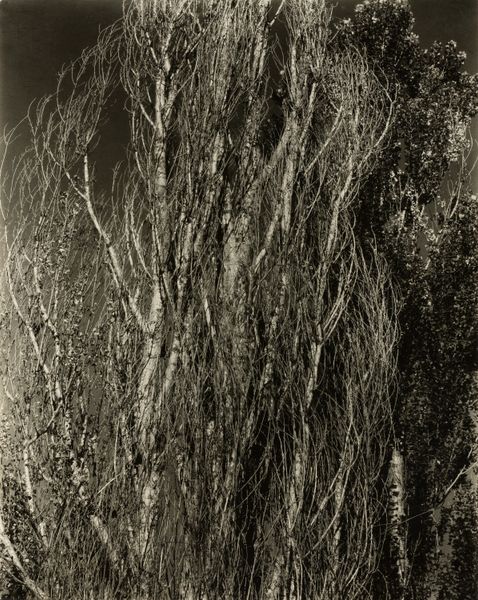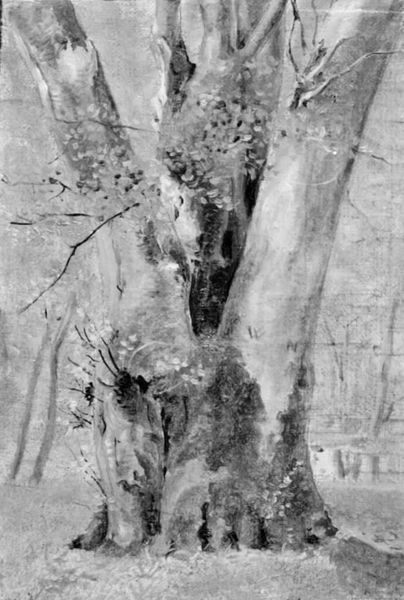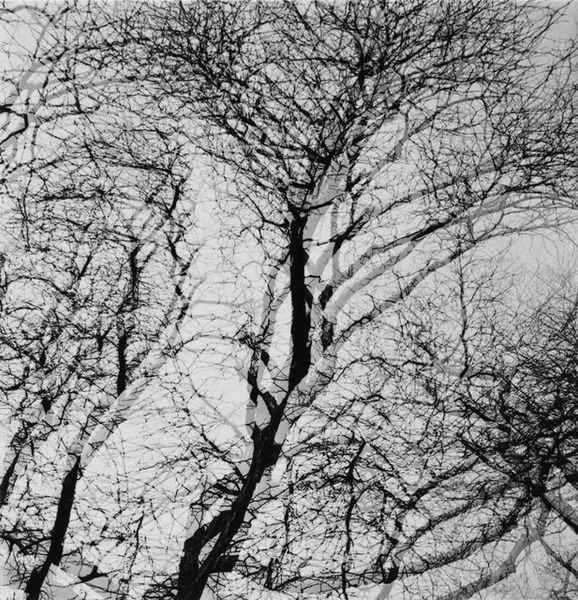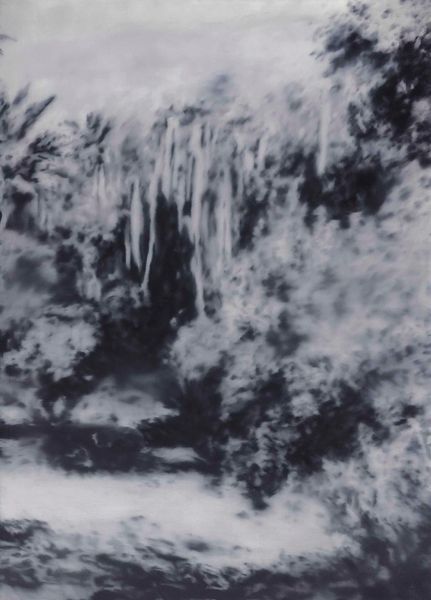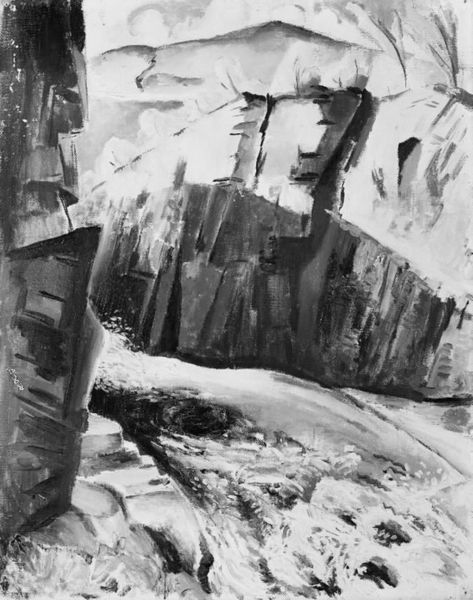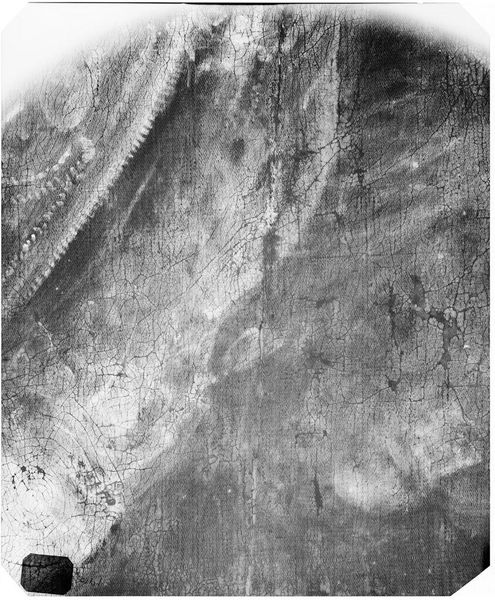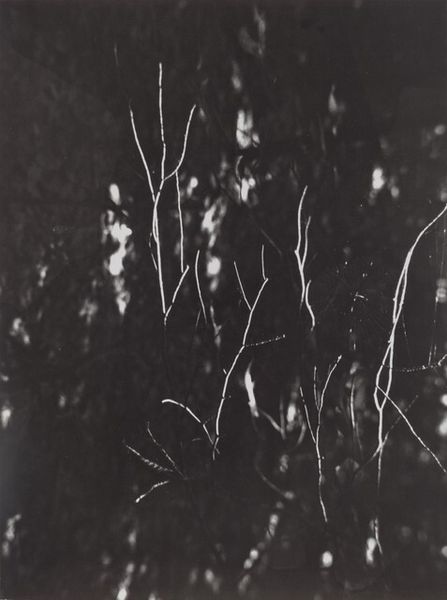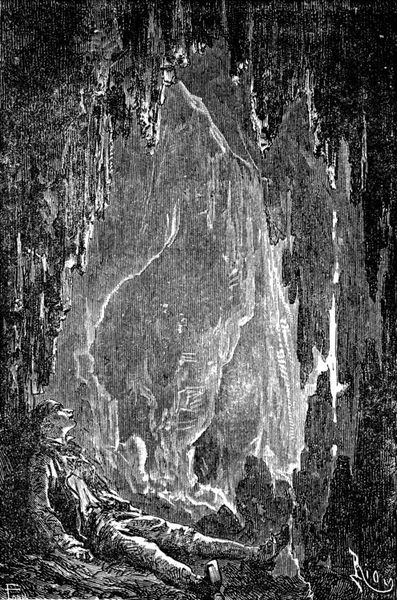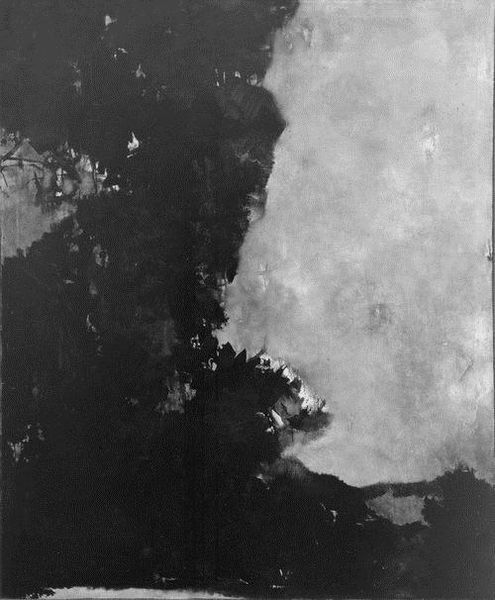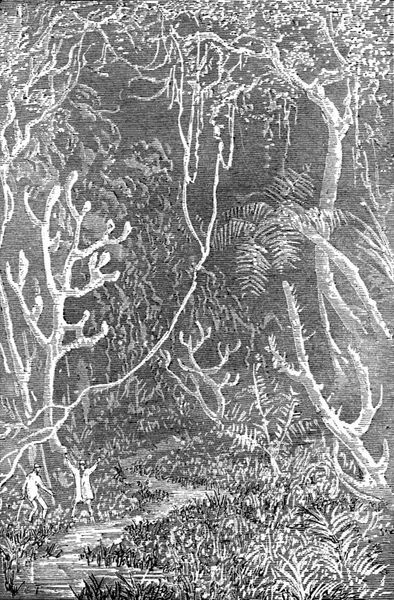
drawing, pencil, charcoal
#
drawing
#
pencil sketch
#
landscape
#
charcoal art
#
pencil
#
hudson-river-school
#
charcoal
Dimensions: 16 1/4 x 10 1/2 in. (41.3 x 26.7 cm)
Copyright: Public Domain
Curator: This is "Trenton Falls, New York," a drawing created in 1836 by Robert Jones, using pencil and charcoal. It’s currently held at the Metropolitan Museum of Art. Editor: It's a scene that feels both chaotic and peaceful simultaneously, doesn't it? The contrast is very intense. A place of retreat? Or potential dangers? Curator: That duality is inherent in the romantic view of nature. Trenton Falls, a popular tourist destination at the time, represented both sublime beauty and the potential for industrial exploitation. Its waterfalls, rendered so dynamically here, spoke of untamed power but would eventually become harnessed. Editor: Yes, I sense an uneasy premonition of landscape exploitation. I mean, notice how dwarfed those little figures are atop the rock formation near the falls? Their gaze is oriented straight into the waterfall! In a social sense, those could represent wealthy, empowered land barons enjoying the ‘splendor’ of untouched territories. Curator: That interpretation fits well with the emerging Hudson River School aesthetic. They were keen on highlighting humanity’s relationship to nature through symbols: waterfalls evoking forces of change, trees standing for growth and strength, all inviting deeper meditation. And indeed a very sharp value contrast in these symbols can create tension and awe. Editor: Exactly. Even the grayscale palette feels significant. It makes me ponder what 'progress' looks like, or at whose expense? Who is profiting and getting representation out of these images of majestic natural landscape? And who is being harmed or left behind? This representation could not reflect any non-white members of that society at that time... Curator: Food for thought, definitely. Art, particularly landscape art of this era, often serves as a mirror reflecting cultural attitudes toward progress and entitlement, but also it creates spaces for visual and emotional dialogues across the generations... Editor: True! And in this one drawing, we already encounter and sense layers of dialogues and complexities.
Comments
No comments
Be the first to comment and join the conversation on the ultimate creative platform.
